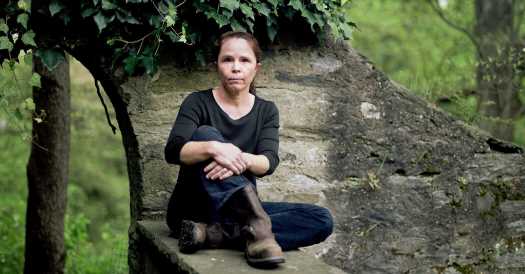Can Carbon Capture Be Part of the Climate Solution?
This is the final installment in the Visionaries series, which looks at figures who are trying to transform the way we live.
Every year, humans pump around 50 billion tons of carbon dioxide and other greenhouse gases into the atmosphere. According to numerous successive and increasingly forceful reports from the Intergovernmental Panel on Climate Change, to avoid the worst effects of a warming planet, that number needs to fall to zero by 2050.
But after decades of inaction in the face of this scientific consensus, emissions have grown so high that reductions from things like increasing energy efficiency and transitioning to renewable electricity will only get us so far. “We know how to do 40 gigatons,” said Julio Friedmann of the Center on Global Energy Policy at Columbia University. “That means you need 10 gigatons of removal.”
He was referring to carbon capture and storage, known as C.C.S. — essentially sucking the carbon dioxide back out of the atmosphere, or from its emissions source, and locking it away somewhere.
Nearly two decades ago, Jennifer Wilcox realized that removal would be key to getting to net-zero emissions. As a professor of chemical engineering at Stanford University, Dr. Wilcox recognized that nature-based solutions — planting trees and rehabilitating wetlands, both of which are really good at absorbing carbon dioxide — could only do so much: Carbon would also need to be captured from the air. So, in 2012, she wrote the textbook on how it’s done. The National Academies of Science came around to Dr. Wilcox’s point of view in 2018, reporting that technologies would need to be developed and advanced to remove the amount needed.
Ms. Wilcox, 45, now has a leading role in the U.S. Department of Energy’s Office of Fossil Energy and Carbon Management, where she is charged with doing just that. But directing $10 billion to investments in carbon capture and storage is just part of the job. Proven technologies must be made cheaply and at scale, and in some cases integrated with other systems. They must be deployed both at sources of carbon dioxide, such as power plants and factories, and in the wild, through systems known as direct air capture. And places must be found where the captured gas can be stored for centuries, which can get tricky. Dr. Wilcox “has described every aspect of this work path,” said Dr. Friedmann, who has known her for decades. “She wakes up every day thinking how do we deploy clean energy technology.”
This interview has been edited and condensed.
What’s holding back carbon capture and storage today? Is it the technology?
Types of carbon capture are often conflated with each other. There’s point source carbon capture, which is retrofitting an existing facility and avoiding emissions from entering the atmosphere. Then there’s carbon dioxide removal — direct air capture. Technology for both approaches exists.
But then there’s the question of, what do you do with all the CO2? The one approach that scales is the depleted oil and gas reservoirs: injecting it deep underground. So to me, it’s absolutely not the technology.
Is underground storage safe, achievable and cost-effective in the long term?
Deep underground storage of CO2 is not new — the oil industry has been doing it for nearly 40 years through enhanced oil production, which is a commercial-scale activity today. Through this industry, we have gained expertise in safe and secure storage, and the same skills, work force, and expertise will apply for dedicated CO2 storage projects. Similar trapping mechanisms that allowed oil and gas to be formed over millions of years deep underground will ultimately trap CO2 as we work toward reversing the flow of carbon back underground, and we’re working to build out the infrastructure.
Takeaways From the Visionaries Series

Takeaways From the Visionaries Series

For the Visionaries limited series, we spoke with a variety of people trying to transform their fields — and our lives.
Here are some takeaways from those conversations →
Takeaways From the Visionaries Series

“The response to SARS-CoV-2 has accelerated largely because of H.I.V. advances.” — Dr. Ravindra Gupta, who led the efforts that resulted in the second case of a patient being cured of H.I.V. and who has now turned to Covid
Takeaways From the Visionaries Series

“I realized that as a doctoral student or in the School of Public Health that I’d never taken a class from someone who was Black. So I thought to myself, ‘If not me, then who?’” — Dr. Rachel Hardeman, founder of the Center for Anti-Racism Research for Health Equity
Takeaways From the Visionaries Series

“When I talk to a corporate leader or an E.P.A. representative who are skeptical, I don’t go on defending the sexy rust. I tell them stories. And I work really hard to pose alternatives.” — Julie Bargmann, a landscape architect who transforms postindustrial spaces
Takeaways From the Visionaries Series

“Our vision is to create a fully consolidated supply chain management system for the global food and agriculture industry.” — Hoshik Shin, the founder of Tridge, a global marketplace for fresh produce
Takeaways From the Visionaries Series

“My spirit name, Tsa-Tsique, means Woman Who Teaches, so it’s my responsibility to be a messenger, and a good relative, while I’m trying to tell these stories.” — Matika Wilbur, a photographer who is documenting every federally recognized tribe in the U.S.
Takeaways From the Visionaries Series

“The state of Minnesota has 20 million acres of agricultural land. What percentage of that land has a cover crop on it? Two percent. In some parts of the Midwest, it’s four.” — Dr. Donald Wyse, co-founder of the Forever Green Initiative, which is working to make regenerative agriculture a reality
Read more from the Visionaries series.
Source: Read Full Article
















